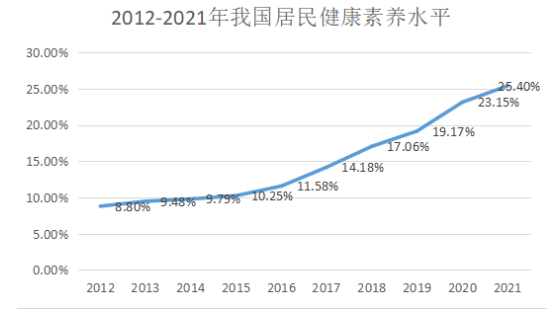2023年考研初试将在2022年12月24日-26日进行,英语二真题及答案233网校已公布。扫码以下二维码可在线估分,加入考研真题交流微信群,及时获取真题更新信息。
2023考研英语二真题及答案扫码获取↓↓
第1题、完形填空。
Here's a common scenario that any number of entrepreneurs face today: you're the CEO of a small business, and though you're making a nice __1__, you need to find a way to take it to the next level. What you need to do is__2__growth by establishing a growth team. A growth team is made up of members from different departments within your company, and it harnesses the power of collaboration to focus __3__on finding ways to grow.
Let's look at a real-world __4__. Prior to forming a growth team, the software company BitTorrent had 50 employees working in the __5__departments of engineering, marketing and product development. This brought them good results until 2012, when their growth plateaued. The __6__was that too many customers were using the basic, free version of their product. And __7__improvements to the premium, paid version, few people were making the upgrade.
Things changed, __8__, when an innovative project-marketing manager came aboard, __9__ a growth team and sparked the kind of __10__ perspective they needed. By looking at engineering issues from a marketing point of view, it became clear that the __11__of upgrades wasn't due to a quality issue. Most customers were simply unaware of the premium version and what it offered.
Armed with this __12__, the marketing and engineering teams joined forces to raise awareness by prominently 13 the premium version to users of the free version __14__, upgrades skyrocketed, and revenue increased by 92 percent.
But in order for your growth team to succeed, it needs to have a strong leader. It needs someone who can __15__the interdisciplinary team and keep them on course for improvement. This leader will __16__the target area, set clear goals and establish a time frame for the __17__of these goals.
The growth leader is also __18__for keeping the team focused on moving forward and steering them clear of distractions. __19__attractive new ideas can be distracting, the team leader must recognize when these ideas don't __20__ the current goal and need to be put on the back burner.
1.
A.purchase
B.profit
C.connection
D.bet
2.
A.define
B.predict
C.prioritize
D.appreciate
3.
A.exclusively
B.temporarily
C.potentially
D.initially
4.
A.experiment
B.proposal
C.debate
D.example
5.
A.identical
B.marginal
C.provisional
D.traditional
6.
A.rumor
B.secret
C.myth
D.problem
7.
A.despite
B.unlike
C.through
D.besides
8.
A.moreover
B.however
C.therefore
D.again
9.
A.inspected
B.created
C.expanded
D.reformed
10.
A.cultural
B.objective
C.fresh
D.personal
11.
A.end
B.burden
C.lack
D.decrease
12.
A.policy
B.suggestion
C.view
D.result
13.
A.contributing
B.allocating
C.promoting
D.transferring
14.
A.As a result
B.At any rate
C.By the way
D.In a sense
15.
A.unite
B.finance
C.follow
D.choose
16.
A.share
B.identify
C.divide
D.broaden
17.
A.announcement
B.assessment
C.adjustment
D.accomplishment
18.
A.famous
B.responsible
C.available
D.respectable
19.
A.Before
B.Once
C.While
D.Unless
20.
A.serve
B.limit
C.summarize
D.alter
第2题、阅读理解PartA。
Directions:
Read the following four texts. Answer the questions below each text by choosing A, B, C or D. Mark your answers on ANSWER SHEET 1. (40 points)
In the quest for the perfect lawn, homeowners across the country are taking a shortcut - and it is the environment that is paying the price. About eight million square metres of plastic grass is sold each year but opposition has now spread to the highest gardening circles. The Chelsea Flower Show has banned fake grass from this year’s event, declaring it to be not part of its ethos. The Royal Horticultural Society (RHS), which runs the annual show in west London, says it has introduced the ban because of the damage plastic grass does to the environment and biodiversity.
Ed Horne, of the RHS, said: “We launched our sustainability strategy last year and fake grass is just not in line with our ethos and views on plastic. We recommend using real grass because of its environmental benefits, which include supporting wildlife, alleviating flooding and cooling the environment.”
The RHS’s decision comes as campaigners try to raise awareness of the problems fake grass causes. A Twitter account, which claims to “cut through the green-wash” of artificial grass, already has more than 20,000 followers. It is trying to encourage people to sign two petitions, one calling for a ban on the sale of plastic grass and another calling for an “ecological damage” tax on such lawns. They have gathered 7, 276 and 11, 282 signatures
However, supporters of fake grass point out that there is also an environmental impact with natural lawns, which need mowing and therefore usually consume electricity or petrol. The industry also points out that real grass requires considerable amounts of water, weed killer or other treatments and that people who lay fake grass tend to use their garden more. The industry also claims that people who lay fake grass spend an average of £500 on trees or shrubs for their garden, which provides habitat for insects.
In response to another petition last year about banning fake lawns, which gathered 30,000 signatures, the government responded that it has “no plans to ban the use of artificial grass.
It added: “We prefer to help people and organizations make the right choice rather than legislating on such matters, However the use of artificial grass must comply with the legal and policy safeguards in place to protect biodiversity and ensure sustainable drainage, while measures such as the strengthened biodiversity duty should serve to encourage public authorities to consider sustainable alternatives.”
21.
The RHS thinks that plastic grass______.
A.is harmful to the environment
B.is a hot topic in gardening circles
C.is overpraised in the annual show
D.is ruining the view of west London.
22.
The petitions mentioned in Paragraph 3 reveal the campaigners'______.
A.disappointment with RHS
B.resistance to fake grass use
C.anger over the proposed tax
D.concern above real grass supply
23.
In Paragraph 4, supporters of fake grass point out______.
A.the necessity to lower the cost of fake grass
B.the disadvantages of growing real grass
C.the way to take care of artificial lawns
D.the challenges of insect habitat protection
24.
What should the government do with regard to artificial glass?
A.Urge legislation to restrict its use.
B.Take measures to guarantee its quality.
C.Remind its users to obey existing rules.
D.Replace it with sustainable alternatives.
25.
It can be learned from the text take fake grass_____.
A.is being improved continuously
B.has seen a market share decline
C.is becoming increasingly affordable
D.has been a controversial product
It’s easy to dismiss as absurd the Trump administration’s ideas for plugging the chronic funding gap of our national parks. Can anyone really think it’s a good idea to allow Amazon deliveries to your tent in Yosemite or food trucks to line up under the redwood trees at Sequoia National Park?
But the administration is right about one thing: U.S. national parks are in crisis. Collectively, they have a maintenance backlog of more than $12 billion. Roads, trails, restrooms, visitor centers and other infrastructure are crumbling.
But privatizing and commercializing the campgrounds would not be the panacea that the Interior Department’s Outdoor Advisory Committee would have us believe. Campgrounds are a tiny portion of the overall infrastructure backlog, and concessionaires in the parks hand over, on average, only about 5% of their revenues to the National Park Service.
Moreover, increased privatization would certainly undercut one of the major reasons why 300 million visitors come to the parks each year: to enjoy nature and get a respite from the commercial drumbeat that overwhelms daily life.
The real problem is that the parks have been chronically starved of funding. We conducted a comprehensive survey examining how U.S. residents view their national parks, and we found that Americans place a very high value on them — whether or not they actually visit them. The peer-reviewed economic survey of 700 U.S. taxpayers, conducted by mail and internet, also found that people would be willing to pay a significant amount of money to make sure the parks and their programs are kept intact. Some 81% of respondents said they would be willing to pay additional taxes for the next 10 years to avoid any cuts to the national parks.
The national parks provide great value to U.S. residents both as places to escape and as symbols of nature. On top of this, they produce value from their extensive educational programs, their positive impact on the climate through carbon sequestration, their contribution to our cultural and artistic life, and of course through tourism. The parks also help keep America’s past alive, working with thousands of local jurisdictions around the country to protect historical sites — including Ellis Island and Gettysburg — and to bring the stories of these places to life.
The parks do all this on a shoestring. Congress allocates only $3 billion a year to the national park system — an amount that has been flat since 2001 (in inflation-adjusted dollars) with the exception of a onetime boost in 2009 as part of the Obama stimulus package. Meanwhile, the number of annual visitors has increased by more than 50% since 1980, and now stands at 330 million visitors per year.
26.
What problem are U.S. national parks faced with?
A.decline of business profits
B.inadequate commercialization
C.lack of transportation services
D.poorly maintained infrastructure
27.
Increased privatization of campground may_________
A.spoil visitor experience
B.help preserve nature
C.bring operational pressure
D.boost visitors to parks
28.
According to paragraphs5 ,most respondents in the survey would_________
A.go to the national parks on a regular basis
B.advocate a bigger budget for the national parks
C.agree to pay extra for the national parks
D.support the national parks’ recent reforms
29.
The national parks are valuable in that they_________
A.lead the way in tourism
B.have historical significance
C.sponsor research on climate
D.provide an income for the locals
30.
It can be concluded from the text that the national park system
A.is able to cope with staff shortages
B.is able to meet visitor’ demands
C.is in need of a new pricing policy
D.is in need of a funding increase
The Internet may be changing merely what we remember, not our capacity to do so, suggests Columbia University psychology professor Betsy Sparrow. In 2011, Sparrow led a study in which participants were asked to record 40 factoids in a computer (“an ostrich's eye is bigger than its brain,” for example). Half of the participants were told the information would be erased, while the other half were told it would be saved. Guess what? The latter group made no effort to recall the information when quizzed on it later, because they knew they could find it on their computers. In the same study, a group was asked to remember both the information and the folders it was stored in. They didn't remember the information, but they remembered how to find the folders. In other words, human memory is not deteriorating but “adopting to new communications technology,” Sparrow says.
In a very practical way, the Internet is becoming an external hard drive for our memories, a process known as “cognitive offloading.” Traditionally, this role was fulfilled by data banks, libraries, and other humans. Your father may never remember birthdays because your mother does, for instance. Some worry that this is having a destructive effect on society, but Sparrow sees an upside. Perhaps, she suggests, the trend will change our approach to learning from a focus on individual facts and memorization to an emphasis on more conceptual thinking something that is not available on the Internet. “I personally have never seen all that much intellectual value in memorizing things,” Sparrow says, adding that we haven’t lost our ability to do it.
Still other experts say it’s too soon to understand how the Internet affects our brains. There is no experimental evidence showing that it interferes with our ability to focus, for instance, wrote psychologists Christopher Chabris and Daniel.J. Simons. And surfing the web exercised the brain more than reading did among computer-savvy older adults in a 2008 study involving 24 participants at the Semel Institute for Neuroscience and Human Behavior at the University of California, Los Angeles.
“There may be costs associated with our increased reliance on the Internet, but I’d have to imagine that overall the benefits are going to outweigh those costs,” observes psychology professor Benjamin Storm. “It seems pretty clear that memory is changing, but is it changing for the better? At this point, we don't know.”
31.Sparrow’s study shows that with the Internet, the human brain will ______.
A.analyze information in detail
B.collect information efficiently
C.switch its focus of memory
D.extend its memory duration
32.The process of “cognitive offloading” ______.
A.helps us identify false information
B.keeps our memory from failing
C.enables us to classify trivial facts
D.lessens our memory burdens
33.Which of the following would Sparrow support about the Internet?
A.It may reform our learning approach.
B.It may impact our society negatively.
C.It may enhance our adaptability to technology.
D.It may interfere with our conceptual thinking.
34.It is indicated in Para. 3 that how the Internet affects our brains?
A.requires further academic research
B.is most studied in older adults
C.is reflected in our reading speed
D.depends on our web-surfing habits
35.Neither Sparrow nor Storm would agree that ______.
A.our reliance on the Internet will be costly
B.the Internet is weakening our memory
C.memory exercise is a must for our brains
D.our ability to focus declines with age
Teenagers are paradoxical. That's a mild and detached way of saying something that parents often express with considerably stronger language. But the paradox is scientific as well as personal. In adolescence, helpless and dependent children who have relied on grown-ups for just about everything become independent people who can take care of themselves and help each other. At the same time, once cheerful and compliant children become rebellious teenage risk-takers.
A new study published in the journal Child Development, by Eveline Crone of the University of Leiden and colleagues, suggests that the positive and negative sides of teenagers go hand in hand. The study is part of a new wave of thinking about adolescence. For a long time scientists and policy makers concentrated on the idea that teenagers were a problem that needed to be solved. The new work emphasizes that adolescence is a time of opportunity as well as risk.
The researchers studied prosocial and rebellious traits in more than 200 children and young adults, ranging from 11 to 28 years old. The participants filled out questionnaires about how often they did things that were altruistic and positive like sacrificing their own interests to help a friend, or rebellious and negative like getting drunk or staying out late.
Other studies have shown that rebellious behavior increases as you become a teenager and then fades away as you grow older. But the new study shows that interestingly, the same pattern holds for prosocial behavior. Teenagers were more likely than younger children or adults to report that they did things like unselfishly help a friend.
Most significantly, there was a positive correlation between prosociality and rebelliousness. The teenagers who were more rebellious were also more likely to help others. The good and bad sides of adolescence seem to develop together.
Is there some common factor that underlies these apparently contradictory developments? One idea is that teenage behavior is related to what researchers call "reward sensitivity." Decision-making always involves balancing rewards and risks, benefits and costs. "Reward sensitivity" measures how much reward it takes to outweigh risk.
Teenagers are particularly sensitive to social rewards—winning the game, impressing a new friend, getting that boy to notice you. Reward sensitivity like prosocial behavior and risk-taking, seems to go up in adolescence and then down again as we age. Somehow, when you hit 30, the chance that something exciting and new will happen at that party just doesn't seem to outweigh the effort of getting up off the couch.
36.According to Paragraph 1, children growing into adolescence tend to____
A.develop opposite personality traits
B.see the world in an unreasonable way
C.have found memories of their past
D.show affection to their parents
37.It can be learned from Paragraph 2 that Crone's study______.
A.explores teenagers' social responsibilities
B.examines teenagers' emotional problems
C.provides a new insight into adolescence
D.highlights negative adolescent behavior
38.What does Crone's study find about prosocial behavior?
A.It results from the wish to cooperate
B.It is cultivated through education
C.It is subject to family influence
D.It tends to peak in adolescence
39.It can be learned from the last two paragraphs that teenagers______.
A.over-stress their influence on others
B.care a lot about social recognition
C.become anxious about their future
D.endeavor to live a joyful life
40.What is the text mainly about?
A.Why teenagers are self-contradictory?
B.Why teenagers are risk-sensitive?
C.How teenagers develop their prosocial ability?
D.How teenagers become independent?
第3题、阅读理解PartB.
Directions:
Read the following text and answer the questions by finding information from the left column that corresponds to each of the marked details given in the right column. There are two extra choices in the right column. Mark your answers on the ANSWER SHEET(10 points)
Net-zero rules set to send cost of new homes and extensions soaring
New building regulations aimed at improving energy efficiency are set to increase the price of new homes, as well as those of extensions and loft conversions on existing ones.
The rules, which came into effect on Wednesday in England, are part of government plans to reduce the UK's carbon emissions to net zero by 2050. They set new standards for ventilation, energy efficiency and heating, and state that new residential buildings must have charging points for electric vehicles.
The moves are the most significant change to building regulations in years, and industry experts say they will inevitably lead to higher prices at a time when a shortage of materials and high labour costs are already driving up bills.
Brian Berry, chief executive of the Federation of Master Builders, says the measures will require new materials, testing methods, products and systems to be installed.“All this comes at an increased cost during a time when prices are already sky high. Inevitably, consumers will have to pay more,"he says.
Gareth Belsham, of surveyors Naismiths, says people who are upgrading, or extending their home, will be directly affected. “The biggest changes relate to heating and insulation,” he explains. “There are new rules concerning the amount of glazing used in extensions, and any new windows or doors must be highly insulated.”
Windows and doors will have to adhere to higher standards, while there are new limits on the amount of glazing you can have to reduce unwanted heat from the sun.
Thomas Goodman, of MyJobQuote, says this will bring in new restrictions for extensions.“Glazing on windows, doors and rooflights must cover no more than 25% of the floor area to prevent heat loss,"he says.
As the rules came into effect last Wednesday, property developers were rushing to file plans just before the deadline. Any plans submitted before that date are considered to be under the previous rules, and can go ahead as long as work starts before 15 June next year.
Builders which have costed projects, but have not filed the paperwork, may need to go back and submit fresh estimates, says Marcus Jefford of Build Aviator.
Materials prices are already up 25% in the last two years. How much overall prices will increase as a result of the rule changes is not clear."Whilst admirable in their intentions, they will add to the cost of housebuilding at a time when many already feel that they are priced out of homeownership,"says Jonathan Rolande of the National Association of Property Buyers. “An average extension will probably see around £3,000 additional cost thanks to the new regs."
John Kelly, a construction lawyer at Freeths law firm, believes prices will eventually come down. But not in the immediate future."As the marketplace adapts to the new requirements, and the technologies that support them, the scaling up of these technologies will eventually bring costs down, but in the short term, we will all have to pay the price of the necessary transition.” he says.
However, the long-term effects of the changes will be more comfortable and energy-efficient homes, adds Andrew Mellor, of PRP architects.“Homeowners will probably recoup that cost over time in energy bill savings. It will obviously be very volatile at the moment, but they will have that benefit over time.”
A.The rise of home prices is a temporary matter.
B.Builders possibly need to submit new estimates of their projects.
C.There will be specific limits on home extensions to prevent heat loss.
D.The new rules will take home prices to an even higher level
E.Many people feel that home prices are already beyond what they can afford.
F.The new rules will affect people whose home extensions include new windows or doors.
G.The rule changes will benefit homeowners eventually.
第4题、翻译题.
41.
In the late18th century, William Wordsworth became famous for his poems about nature. And he was one of the founders of a movement called Romanticism, which celebrated the wonders of the natural world.
Poetry is powerful. Its energy and rhythm can capture a render, transport then to another world and make them see things differently. Though carefully selected words and phrases, poems can be dramatic, funny,beautiful,moving and inspiring.
No one knows for sure when poetry began but it has been around for thousands of years,even before people could write. It was a way to tell stories and pass down history. It is closely related to song and even when written it is usually created to be performed out loud. poems really come to life when they are recited. This can also help with understanding them too, because the rhythm and sounds of the words become clearer.
18世纪后期,威廉·华兹华斯因其关于自然的诗歌而闻名遐迩。他是浪漫主义运动的创始人之一,该运动赞美自然世界的奇观。
诗歌的力量是强大的。它的能量和节奏可以捕捉每一种表达,后将他们运用到另一个世界,并使他们以不同的方式看待事物。尽管诗歌是由精心挑选的单词和短语构成的,但它可以是戏剧性的、有趣的、美丽的、动人的和鼓舞人心的。
没有人确切地知道诗歌是什么时候开始的,但它在人们写作之前就已经存在了几千年。诗歌是一种讲述故事和传承历史的方式。它和歌曲有着密切的关系,即使诗歌是文字的形式,但它创作出来后通常需要大声演奏出来。诗歌在朗诵后才真正鲜活起来。这样也有助于理解诗歌,因为诗歌的节奏和声音变得更清晰了。
第5题 写作PartA.
42、Part A
51. Directions:
An art exhibition and a robot show are to be held on Sunday, and your friend David asks you which one he should go to. Write him an email to
1)make a suggestion, and
2)give your reason(s).
You should write about 100 words on the ANSWER SHEET.
Do not use your own name in the letter. Use “Li Ming” instead.
Do not write your address. (10 points)
Dear David,
How’s everything going? I am very delighted to receive your letter mentioning that you wondered whether to go to the art fair or the robot show. I am writing this letter to provide my tip for you.
As an experienced person who has participated in both activities, I suggest you attend the art exhibition. First, the art exhibition you mentioned is rather well-known in the industry, bringing together the works of many outstanding artists from all over the world, such as Leonardo da Vinci and Van Gogh. In addition, so far as I know, you have always been passionate about painting, and this is an excellent opportunity to arouse your interests in exploring something deeper in this field.
I do hope that my suggestion is helpful, and if you need any further information, please do not hesitate to contact me.
Sincerely,
Li Ming
第6题 写作PartB.
43.Part B
52. Directions:
Write an essay based on the chart below. In your writing, you should
1) interpret the chart, and
2) give your comments.
You should write about 150 words on the ANSWER SHEET.(15 points)
健康素养(health literacy)是指个人获取和理解基本健康信息和服务,并运用这些信息和服务做出正确决策,以维护和促进自身健康的能力。健康素养水平指具备基本健康的人在总人群(15-69岁城乡居民)中所占的比例。 
What is explicitly presented in the above line chart is the level of residents’ health literacy in China during 2012 to 2021. According to the chart, this period witnessed a slight upward trend, from 8.8% in 2012 to 25.4% in 2021, reaching the highest point.
I hold that several driving factors can account for the phenomenon, and I would like to illustrate three most critical ones as follows. To start with, it is obvious that this trend is closely bound up with the guidance of relevant policies to promote health literacy that have implemented over the past decade. Owing to these policies, citizens realize that attaching importance to it is beneficial to themselves and have more chance to pay attention to it. In addition, under no circumstances can we deny that the population of today aspire to give priority to health literacy, so there are more and more people who are willing to learn knowledge regarding how to maintain and promote their ability to ensure health literacy. What’s more, with the economy booming and society advancing, the rapid growth of personal wealth has laid a solid basis for people to afford heath care.
Taking all these factors into consideration, we may come to the conclusion that the current trend will go on in the future.
复试是硕士研究生招生考试的重要组成部分,用于考查考生的创新能力、专业素养和综合素质等,是硕士研究生录取的必要环节,复试不合格者不予录取。
复试时间、地点、内容、方式、成绩使用办法、组织管理等由招生单位按教育部有关规定自主确定。复试办法和程序由招生单位公布。招生单位原则上应采用命制多套试题、安排考生随机抽取试题等方式加强复试过程管理。全部复试工作一般应在录取当年4月底前完成。
考研初试成绩发布时间由各省市教育考试院研招办发布,考研成绩查询入口官网为“中国研究生招生信息网”。
2023考研初试成绩查询入口预计开通时间为2023年2月底左右,届时成绩查询官网入口会显示已开通初试成绩查询的报考单位,请考生及时关注。
考研想稳妥上岸?让资深讲师方浩、陈剑、赵鑫全为你护航,全套备考资料,轻松get考点>>>
233考研针对不同知识储备的考生,设立了不同的课程:
备考资料推荐
考研资料,学霸编资料合集,贯穿备考全阶段,立即免费下载>>>











